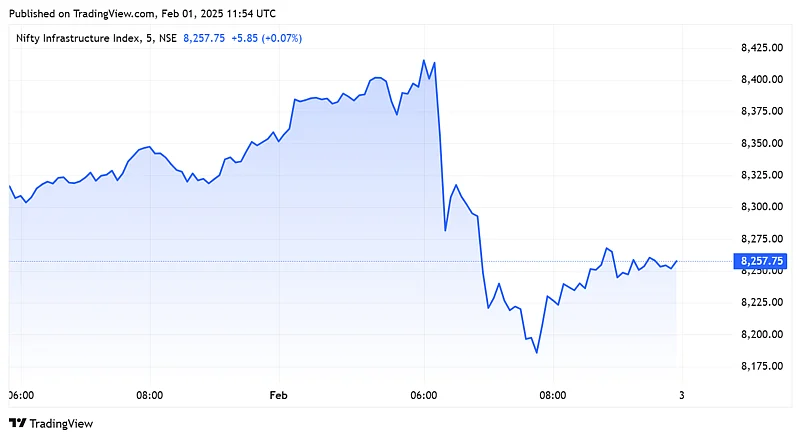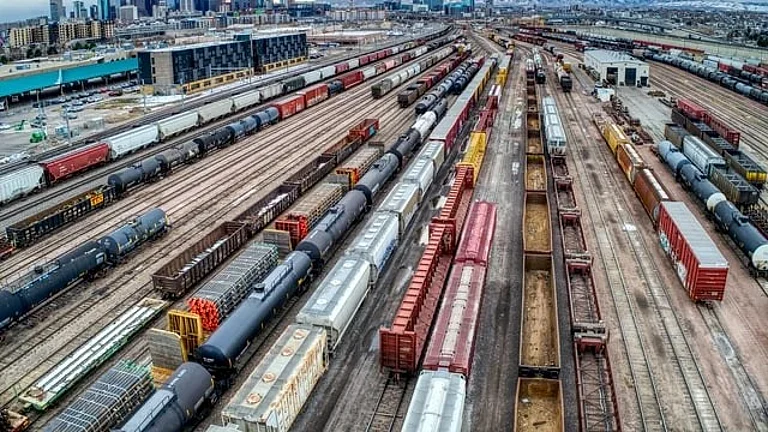Budget 2025, Stock Market: 'Prudence' might have won over 'populism' in this year's budget as the Finance Minister maintained a fine balance between boosting consumption levels alongside keeping fiscal deficit in check. However, the 'modest' growth in capex outlay brought little to no cheer for investors.
This year's capex outlay, which stood at Rs 11.2 Lakh Crore, was only slightly higher than last year's budget figure of Rs 11.1 Lakh Crore. This pushed infrastructure stocks on a downward spiral. Despite benchmark indices, Sensex and Nifty, concluding the budget day on a flat note, Nifty infra plummeted by more than 1%.

"Budget 2025 seems to have addressed the issue of consumption slowdown by providing a boost to the middle class in the form of lower tax. However, capex may not be as budgeted and could be a worry for growth," said Vikram Kasat, Head - Advisory, PL Capital.
Besides infra, other sectoral stocks like railways and cement also dropped sharply as the industry was hoping for a higher outlay. Major Railway PSU stocks like RVNL, IRFC, Titagarh Rail Systems and RailTel declined up to 5%. Cement giants like UltraTech and Ambuja Cement also went on a downward spiral.
This year's budget theme, quite evidently, inclined more towards consumption considering the lower demand levels that threaten to impact India Inc.'s quarterly earnings. But the flat capex has in-turn caused a bloodbath in infra stocks.
"At the margin, there is a tilt towards supporting consumption through tax cuts for middle-class households, relative to the public capex push seen over the last four years. This shift takes into account the difficulty in executing public capex projects due to budget and institutional capacity constraints, and the need to support private consumption this year, given the weakness in urban consumption," said Sonal Varma, Chief Economist, Nomura.
It is also worth noting that FY25's 'actual' spending will likely be lower than the planned amount.
On the brighter side...
While the market mood remains subdued at the current point in time as the total outlay failed to meet the expectations of D-street and industry players in the sector, there is a brighter side to the dim outlook.
Despite a rather conservative capex growth play for FY26, it's still expected to increase by over 10% compared to what was actually spent in FY25, as per analysts. Plus, the centre's increased funding to states has also surged by 40% to Rs 4.3 Lakh crore, which will in-turn boost infrastructure growth.
During a media briefing post-budget, FM Nirmala Sitharaman pointed out that the government has not foregone capex for revenue expenditure or consumption spending.
Last year, Nifty Infra's return remained a mere single digit. However, in the last 5-years, the sectoral index has delivered a massive return of over 160%.
As for the cement sector, the government’s increased focus on boosting consumption might help in increasing the demand, especially in housing which forms around two-thirds of the commodity's use. On the affordable housing side, PMAY rural scheme appears to be a silver lining, with FY25RE up nearly 50% over the low spend of FY24, said Khushbu Lakhotia, director, India Ratings & Research.
"However, despite the jump, the revised estimate is significantly lower than the budgeted estimate. A further increase of 70% to Rs 550 billion has been budgeted for FY26, which could spur cement demand from rural affordable housing, there remains a risk of underachievement," she added.
For investors, the sector-picking task continues to be a wait-and-watch game due to complicated macros and a mixed demand outlook moving ahead.































